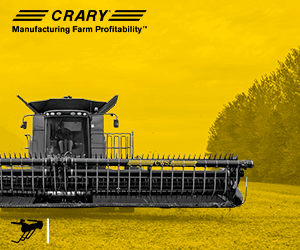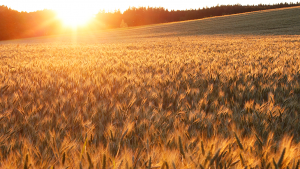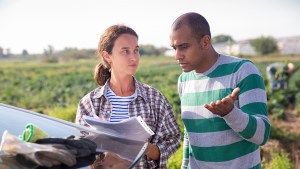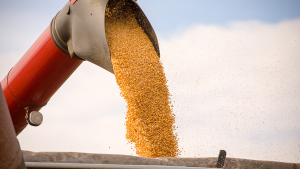Seed development: soybeans
THE PROCESS OF PRODUCING THE BEST VARIETY
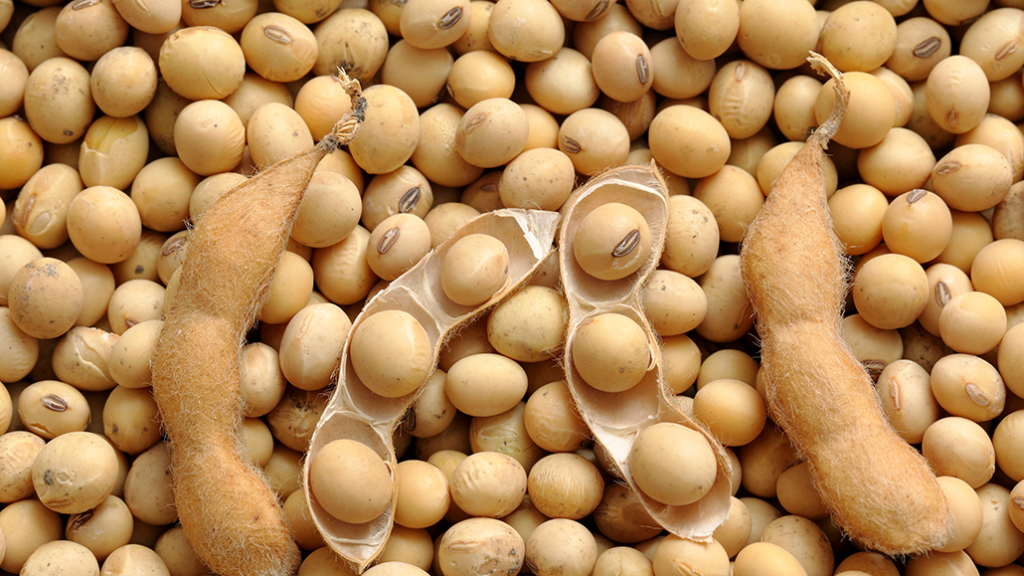
WHEN SOYBEANS ARE planted, most farmers, thoughts revolve around current weather patterns, upcoming herbicide applications, what the soybean market is doing, or a host of other pertinent considerations. But does the thought cross many farmers’ minds about the time and effort that has been invested into creating a good quality seed, which will in turn produce a high yielding soybean plant? Or have we just come to expect it?
If we jump back to high school science class, many may be able to recall some of the learnings on genetics and cross breeding, others may remember their first pickup truck that they drove to those classes better. But no matter what is remembered, the general knowledge that was most likely retained was that good science doesn’t happen overnight.
In fact, breeding a soybean seed from start to when it becomes commercially available can take anywhere from eight to 10 or more years. Breeding for any type of plant starts with crossing one with another.
Dr. Milad Eskandari, an associate professor working on soybean breeding and genetics at the University of Guelph, Ridgetown Campus, used an example of breeding soybeans for soybean cyst nematode (SCN) resistance. It is all about taking one soybean plant that has high yields, crossing it with another one that shows SCN resistance, which might not have a high yield, and working your way through selecting the best offspring from the various crosses made that contains both best yield and SCN.
Sounds easy? Think again.
THE BREEDING PROCESS
Eskandari begins by crossing the two chosen plants, this is called an F1 cross, in a greenhouse. This is done by taking the pollen and placing it on the stigma, it is a very tedious process requiring tweezers and a magnifying glass. Once the F1 crosses have produced a seed, they will then plant them in a field as F2 (the second generation of the particular cross), the field must have maximum segregation. The goal at this stage is to produce 500, F2 plants from 500 seeds from the F1 generation. The seeds from the F2 generation are sent to Costa Rica to be planted in the fall in a nursery. They will plant the 500 F2 seeds, allow them to mature and then pick one seed from each plant (now the F3 generation). Planting each seed, picking one seed from each plant (F4 generation) and send them back to Ontario. At this point Eskandari will receive 500 seeds back.
The F4 generation of seeds will be planted in the spring in an Ontario field. At this point the first selection happens, there are 500 unique plants to look at, with about 120 plants that seed will be collected from. Selection is based on plants that look promising and that fall into the right maturity group.
“Each of these single plants has the potential to go to the farmer eventually,” Eskandari notes. The seeds that made this first selection cut will then be planted again (F5 generation), with selection processes again looking at maturity, along with appearance, seed size, and lodging potential. At the F5 generation, if the breeder was, for example, aiming for an SCN resistant variety, Eskandari says, “that at the F5 stage they take leaf tissue and will do a genetic marker analysis. If the plant is showing resistance, it will be kept in the program, if not it will be discarded.”
The aim at this point is to have up to 75 plants that are planted in the F6 generation, which is the preliminary yield trial stage.
PRELIMINARY TRIALS
At the preliminary yield trial stage, there are two trials with two replications at two locations. Again, the selection is done for ideal plants.
“From this stage, the lines will be always compared with current successful commercial lines in Ontario to select the high yielding. We also evaluate the lines for important seed quality traits, such as protein and oil, that are important for end-users,” says Eskandari.
Eskandari hopes that at the end of this trial stage they will have narrowed down to about 75 lines, which are selected as being better than the checks (current successful commercial Ontario lines).
The remaining soybean lines are now entered into advanced yield trials (F7 generation), which is three reps across three locations, from here any promising lines are again extracted. All data from the advanced trials are shared with seed companies, who can pick which lines to trial and potentially commercialize. Eskandari enters any lines that are chosen into a candidate yield trial (F8 generation), three reps across three locations.
After the F8 generation, if a line is headed towards commercialization, it will be entered in the Ontario Soybean Variety Trials. Grain Farmers of Ontario supports these trials. Farmers can access the trial results online. They are a valuable reference for selecting new varieties to grow.
Disease resistance is an important element of these trials.
“They will target fields with high populations of SCN or other disease in the trials to see how the line does. Also, at the advanced testing level, the lines may undergo a bioassay test for various diseases,” says Eskandari.
Overall, it is very apparent that Eskandari is passionate about what he does. “The goal is to get the farmers good lines, it doesn’t matter which program they come from, there is great support and collaboration. It is important that breeders have good communication with farmers and farmer organizations. If a problem is starting, breeders need to work on it ahead of time to be ahead of the problem instead of always chasing it.”
INDUSTRY DEVELOPMENT
As the soybean reaches the end of the breeding line, product developers and others from seed companies will be paying particular attention to what is coming out of the pipeline. Once the soybean variety has been purchased from a breeder, or in some cases companies take their own varieties to commercialization, there is another two to three years before it ends up in a farmer’s shed.
Mike Urquhart a soybean technician with Pride Seeds, explains that they take breeder seed that has been selected for their particular company and grow an approximately 2.5 acre plot. At this stage they are looking for any rogue, off types which they will remove, this process begins at flowering and is done all the way up to harvest. They are also looking at yield and if the variety is placed in the right maturity area. At this point, the variety may continue to commercialization, or it could be deleted if it is not what the company was hoping for.
Following the breeder seed harvest, Urquhart hopes to have 100 to 150 bags of seed, which will then be sent out to foundation seed growers. Certain growers are accredited to grow this seed, they must meet certain standards and follow a list of requirements.
“The main thing is purity when it comes to soybean seed production,” Urquhart says. “Yield is important, but purity is key.”
At harvest of the foundation seed season, the fields are scouted by a private agency who is audited by the Canadian Seed Growers Association and by the Canadian Food Inspection Agency, who are also making sure there are no off types, among other things.
Harvest occurs when the crop is 11 to 14 per cent moisture level, ideally at 13 per cent. If seed grown is outside of the parameters set for harvest and quality, the grower can lose premiums.
A sample of the seed is taken at harvest when filling bins and sent to the seed company for initial quality checks and preliminary germ. Further checks are done when the seed is delivered into the production facility.
When asked about what is done when production is low due to a drought or other weather issue, Urquhart explained that if they get a lower production than anticipated, they work with it. It is not like with corn where when it is sold out it is sold out. With corn, sometimes it would be sent to winter production for more seed, but it isn’t economically feasible to do that with soybeans. So, they spread out their risk and varieties enough to hopefully get good yields coming in.
“Even in tough years where soybean harvest has taken place in December, it still ended up ok. Soybeans are very resilient,” says Urquhart.
From here, the seed can either become certified seed and treated, ending up in a bag in a farmer’s shed, or it can be reintroduced into foundation seed (also receives a treatment) again to help grow the seed that will be available to farmers in future years. From start to finish, it is a 10 to 11 year process. •


